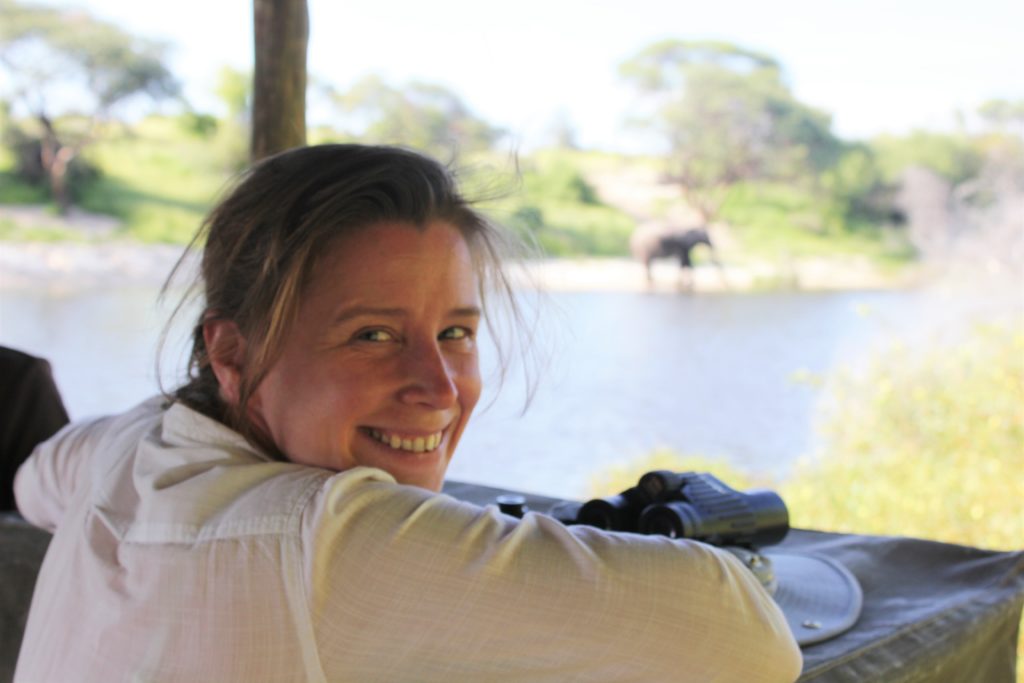Essential empirical data for effective ecological restoration.
Human activity can have both positive and negative impacts on biodiversity, often playing out over long timescales. Professor Kirsty Park’s research provides ways to quantify the effects of environmental change on biodiversity across multiple species, habitats and land-uses. Focusing on highly anthropogenic landscapes, her work tests the efficacy of solutions to mitigate human impacts upon nature.
Woodland wonders
Woodland creation is a highly topical activity, with both Scottish and UK Governments offering financial support to landowners for tree planting. It’s also very long-term, with ecological consequences stretching from decades to centuries, making it difficult to study experimentally. Kirsty and colleagues created the Woodland Creation and Ecological Networks project (WrEN) to help overcome the challenge of investigating these long-term impacts, providing data to policymakers and practitioners on priority actions to restore and enhance ecological networks for wildlife.
WrEN uses a ‘natural experiment’ approach to study the effects of woodland creation on biodiversity and ecosystem functioning. This means that, rather than direct manipulation, the project makes use of sites where land-use change has already occurred: historical woodland planting over the past 150 years has inadvertently generated test landscapes comprising woodland patches of varying age, size and degree of connectivity.
“Because the UK has very good historical land-cover maps, we can usually make a reasonable estimate of when a patch of woodland became established, even for woodlands created over 100 years ago” Kirsty says. This semi-experimental set up enables the researchers to determine which attributes of newly created woodlands (and the landscapes around them) are associated with successful colonisation and establishment by a wide range of woodland species.
So far the WrEN network includes over 100 patches of secondary broadleaved woodland in Scotland and England, within which more than 2,000 species have been recorded, from vascular plants, lichens and bryophytes to invertebrates, small mammals, bats and birds. To date the work has focused on specific groups – such as birds or insects – but Kirsty says this is now expanding, “working on a synthesis across biological communities, and branching out in new projects to explore how restoration influences ecological complexity and resilience in both woodlands and grasslands.”
Accidental academic
Although interested in the natural world from a young age, inspired by David Attenborough’s classic TV programmes, Kirsty says, “Academia was not on the agenda.” A BSc in Biology at Leeds University led to a PhD at Bristol University studying bat roosting and hibernation ecology, but after that she planned to work in conservation, perhaps for a charity or statutory agency. “I’d been applying for lots of practical conservation jobs – and getting nowhere – when out of the blue I had a phone call from asking if I’d be interested in a job at Stirling University,” she recalls. The post was a 16-month position examining the evolutionary pressures of tail streamer evolution in swallows, “And that was 24 years ago!” More postdocs and a fellowship convinced Kirsty that university roles could be very rewarding. A lectureship followed in 2005, and she was promoted to professor in 2016.
Highly collaborative
Collaboration is key to the success of Kirsty’s work, including partners in conservation NGOs, government agencies and industry. “This,” she emphasises, “helps ensure I’m asking the research questions stakeholders are interested in, and that the results get back to the right people.” WrEN, for example, is co-led by the University of Stirling and Forest Research in collaboration with academics, policymakers and ecological restoration practitioners across the UK. Even a construction materials company, Tarmac, funded three years of the project, using the results to help guide and inform their own restoration projects.

Kirsty clearly loves her role, especially its inherent variety: “One moment I can be designing an experiment to test the effects of land management on breeding birds; the next I can be looking at results from a student project. Even supposedly well-known species can surprise, and field trips with students or external collaborators are always enjoyable,” she enthuses. Variety brings its challenges, however, and she admits it is a juggling act to devote enough time to research, teaching, administration and the rest. “It’s not always easy to get right.”
Most importantly, Kirsty says, “I’ve come to appreciate the critical role of colleagues in the enjoyment you get from a job. Work should be fun, and I have been very lucky in having some wonderful collaborators and a great research team.”
Professor Kirsty Park is Head of Biological and Environmental Sciences at the University of Stirling. Her work is supported by multiple organisations including UKRI, Defra, the Forestry Commission, Leverhulme Trust, the Woodland Trust, the Scottish Forestry Trust and Tarmac. Find out more here and follow the WREN project here.
This post is part of a series showcasing Scotland’s innovative, high-impact research supporting biodiversity conservation, in partnership with Scottish Government and NatureScot. Read the rest of the series here.
Further reading
Whytock, R.C., et al. 2018. Bird‐community responses to habitat creation in a long‐term, large‐scale natural experiment. Conservation Biology 32(2): 345—354. https://doi.org/10.1111/cobi.12983
Ashwood, F., et al. 2019. Woodland restoration on agricultural land: long‐term impacts on soil quality. Restoration Ecology 27(6): 1381—1392. https://doi.org/10.1111/rec.13003
Masterton, W., et al. 2020. Greenspace interventions for mental health in clinical and non-clinical populations: What works, for whom, and in what circumstances? Health & Place 64: 102338. https://doi.org/10.1016/j.healthplace.2020.102338
Watts, K., et al. 2020. Ecological time lags and the journey towards conservation success. Nature Ecology & Evolution 4(3): 304—311. https://doi.org/10.1038/s41559-019-1087-8
Bullock, J.M., et al. 2022. Future restoration should enhance ecological complexity and emergent properties at multiple scales. Ecography 2022: e05780. https://doi.org/10.1111/ecog.05780
